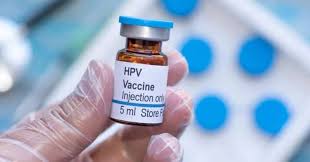After years of preparation and planning, Pakistan is set to introduce the Human Papillomavirus (HPV) vaccine nationwide from September 2025, marking a major public health milestone. The campaign, part of the Expanded Programme on Immunisation (EPI), aims to vaccinate millions of school-aged girls and reduce one of the leading causes of cancer death among women.
1. Why the HPV Vaccine Matters Now
- Pakistan ranks seventh globally in cervical cancer incidence, and annually the disease claims over 3,000 lives.
- Most cervical cancers in Pakistan are caused by HPV types 16 and 18, which the vaccine protects against.
- Screening coverage is extremely low Pap smear uptake is estimated at only about 2% which makes prevention via vaccination essential.
- Evidence shows that a single dose of HPV vaccine can provide long-lasting immunity, especially when administered before the age of 15.
2. Who Will Be Vaccinated and How
- The initial rollout will target girls aged 9 to 14 years, with particular focus on girls enrolled in school.
- The campaign launch will begin in Sindh province on September 13, followed by rollout across Islamabad and Punjab from September 15 to 27.
- Priority is given to both school-going and out-of-school girls to ensure inclusivity.
3. Implementation Strategy
- The campaign relies heavily on school-based delivery, aiming to cover roughly half of the target population through educational institutions.
- Clinics and community outreach will serve those outside the formal school system.
- Local health authorities have already begun training master trainers and vaccinators to support smooth execution.
- Public communication efforts will frame the vaccine primarily as a cervical cancer prevention tool, avoiding sensitive or stigmatizing language.
4. Partnerships and Global Support
- The rollout benefits from technical and financial backing from major partners including GAVI, WHO, and the Gates Foundation, which has pledged $2.5 billion globally to support women’s health innovations.
- WHO guidance has shaped the adoption of a single or two-dose schedule, simplifying logistics and reducing costs.
- Community engagement is being prioritized, including outreach to religious and political leaders to encourage acceptance and combat misinformation.
5. Health Impact and Cost Efficiency
- HPV vaccine is globally recognized as the most cost-effective intervention against cervical cancer, especially in low- and middle-income countries.
- Modeling indicates that broad vaccination of adolescent girls could reduce cervical cancer incidence by 70–90% over time.
- Since Pakistan previously had no HPV vaccine in its national immunization schedule, the campaign marks a transformative expansion in preventive care.
6. Challenges and Forward Strategy
- Addressing vaccine hesitancy remains critical myths such as infertility or promoting premature sexual activity must be countered through clear messaging.
- Ensuring cold-chain management, data tracking, and supply continuity across provinces will be essential for success.
- Long-term success also depends on integrating future cervical screening programs such as HPV DNA testing and Pap smears.
Conclusion & Looking Ahead
September 2025 marks the beginning of a new era in women’s health in Pakistan. By vaccinating girls before exposure to HPV, the campaign aims to sharply reduce future rates of cervical cancer. With global partners on board and a clear strategy centered on schools, community outreach, and expert training, Pakistan is laying the groundwork for sustainable cancer prevention.
Beyond immediate protection for vaccinated cohorts, this launch sets the stage for future expansion potentially extending coverage to older age groups and even viewing HPV vaccine as a foundation for broader sexual and reproductive health education. With consistent effort, this initiative could usher in a generational shift toward a healthier future for Pakistani women.



Comments (0)
No comments yet. Be the first to comment!
Leave a Comment